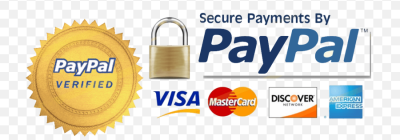Introduction
Building a multi-vendor marketplace can be a game-changer for your business. It allows you to host multiple sellers, each with their unique products, creating a diverse shopping environment for your customers. This guide will walk you through the process of creating a multi-vendor marketplace using WordPress, a popular and versatile platform.
We’ll delve into the concept of multi-vendor marketplaces, the benefits they offer, and why WordPress is an excellent choice for building your marketplace. By the end of this guide, you’ll have a clear roadmap to launch your own multi-vendor marketplace. You will be able to do that with the help of a multi vendor marketplace theme.

Understanding Multi-Vendor Marketplaces
What is a Multi-Vendor Marketplace?
A multi-vendor marketplace is an online platform where multiple independent sellers can sell their products or services. Each seller has their own storefront within the marketplace. Examples of multi-vendor marketplaces include Amazon, Etsy, and eBay. As a marketplace owner, you manage the platform and transactions, while the sellers focus on their products and customers.
Benefits of a Multi-Vendor Marketplace
Multi-vendor marketplaces offer numerous benefits. They provide customers with a wide variety of products from different sellers all in one place, enhancing the shopping experience. For sellers, these marketplaces offer a platform to reach a larger customer base without the need to maintain a standalone online store.
As a marketplace owner, you can earn revenue through commission on sales, listing fees, or a combination of both. Additionally, having multiple sellers contributes to a dynamic and competitive marketplace, which can drive traffic and increase sales.

Why Choose WordPress for Your Marketplace?
Flexibility and Customizability of WordPress
WordPress is a highly flexible and customizable platform, making it an excellent choice for building a multi-vendor marketplace. It allows you to create a marketplace that matches your vision and meets your specific business needs. With thousands of themes and plugins, you can design a unique and user-friendly marketplace.
Wide Range of Plugins and Extensions
WordPress offers a wide range of plugins and extensions, many of which are specifically designed for building and managing a multi-vendor marketplace. These tools can help you handle various aspects of your marketplace, such as vendor registration, product listings, payments, and shipping. They can also enhance your marketplace with additional features like reviews, ratings, and social media integration.
Active and Supportive Community
One of the biggest advantages of WordPress is its active and supportive community. There are numerous forums, tutorials, and resources available to help you navigate the process of building your marketplace. If you encounter a problem or need advice, chances are someone in the WordPress community has a solution or can point you in the right direction.
Moreover, WordPress is continually updated and improved by its community, ensuring that the platform remains secure, efficient, and up-to-date with the latest web standards and technologies.
Choosing the Right Marketplace Theme
Importance of a Good Theme
Selecting the right theme for your marketplace is crucial. The theme determines the look and feel of your marketplace, influencing the user experience. A well-designed theme can make your marketplace more attractive, user-friendly, and professional. It can also enhance your brand identity and help you stand out in the competitive online marketplace industry.
Moreover, a good theme is not just about aesthetics. It also affects the functionality of your marketplace. It should be responsive, SEO-friendly, and compatible with essential plugins and extensions.
Key Features to Look for in a Marketplace Theme
When choosing a marketplace theme, there are several key features to consider. First, it should be responsive, ensuring that your marketplace looks good and functions well on all devices. Second, it should be compatible with popular marketplace plugins, allowing you to add necessary functionalities to your marketplace.
Other important features include customization options, SEO-friendliness, speed and performance, and support for multiple payment gateways. It’s also beneficial if the theme comes with built-in features for vendor management, product listings, and customer reviews.
Introducing Our Marketplace Theme
We offer a premium WordPress service marketplace theme designed specifically for multi-vendor marketplaces. Our theme is fully responsive, ensuring a seamless shopping experience on any device. It’s also compatible with popular plugins, allowing you to add and manage multiple vendors, products, and payment gateways with ease.
Our theme offers extensive customization options, enabling you to create a marketplace that aligns with your brand identity. It’s SEO-friendly, helping your marketplace rank higher in search engine results. With our theme, you can build a robust, user-friendly marketplace that meets the needs of both your vendors and customers.
Step-by-Step Guide to Building Your Marketplace
Step 1: Setting Up Your WordPress Site
Start by setting up your WordPress site. This involves choosing a domain name, purchasing a hosting plan, and installing WordPress. Your domain name should be unique, easy to remember, and reflective of your marketplace. Choose a reliable hosting provider that offers excellent uptime, speed, and customer support.
Step 2: Installing and Configuring Your Marketplace Theme
Once your WordPress site is up and running, install your marketplace theme. Navigate to the Appearance section in your WordPress dashboard, click on Themes, and then Add New. Upload the theme file and click Install. After the theme is installed, click Activate to apply it to your site. You can then proceed to configure the theme settings according to your preferences and requirements.
Step 3: Setting Up Vendor Registration and Management
Next, set up vendor registration and management. This involves configuring settings related to vendor registration, profiles, product uploads, and commissions. You can choose to approve vendor registrations manually or automatically. Make sure to provide a user-friendly interface for vendors to manage their products and orders.
Step 4: Adding Products and Categories
Start adding products and categories to your marketplace. You can create various product categories to make it easier for customers to browse your marketplace. When adding products, include detailed descriptions, high-quality images, and pricing information. Encourage your vendors to do the same.
Step 5: Setting Up Payment Gateways
Setting up payment gateways is a crucial step in building your marketplace. Choose reliable payment gateways that support multiple currencies and offer secure transactions. Configure the payment settings to direct the payments to your account, from which you can distribute the earnings to your vendors.
Step 6: Implementing Shipping Options
Implement various shipping options for your marketplace. You can offer free shipping, flat rate shipping, or shipping based on weight or location. Make sure to integrate with reliable shipping carriers to ensure timely and efficient delivery of products.
Step 7: Customizing Your Marketplace’s Appearance
Customize the appearance of your marketplace to reflect your brand identity. This includes choosing a color scheme, setting up your logo, and customizing the layout of your homepage, product pages, and other key pages. Make sure your marketplace is visually appealing and easy to navigate.
Step 8: Optimizing Your Marketplace for SEO
Finally, optimize your marketplace for SEO to improve its visibility in search engine results. This involves using relevant keywords in your content, optimizing your meta tags, and ensuring your site is fast and mobile-friendly. Consider using an SEO plugin to make this process easier.
Maintaining and Growing Your Marketplace
Regularly Updating Your Site and Theme
Regular updates are crucial for the security and performance of your marketplace. Keep your WordPress site, theme, and plugins updated to the latest versions. This not only ensures that you have the latest features and improvements, but also protects your site from potential security vulnerabilities.
Engaging with Your Vendors and Customers
Engagement is key to the success of your marketplace. Regularly communicate with your vendors and customers through emails, newsletters, or social media. Listen to their feedback and make necessary improvements to your marketplace. This will help you build strong relationships with your vendors and customers, and foster a sense of community around your marketplace.
Marketing and Promoting Your Marketplace
Marketing and promotion are essential for growing your marketplace. Use various marketing strategies such as SEO, content marketing, social media marketing, and email marketing to reach your target audience. Regularly promote your marketplace and its unique features, and highlight the benefits of joining your marketplace as a vendor or customer.
Conclusion
Building a multi-vendor marketplace with WordPress can be a rewarding venture. It requires careful planning, the right tools, and continuous effort. But with the step-by-step guide provided in this article, you’re well on your way to creating a successful marketplace. Remember, the key to a thriving marketplace is not just about having a great platform, but also about engaging with your vendors and customers, and continuously improving and promoting your marketplace.

FAQs
How can I create my own marketplace?
Creating your own marketplace involves several steps. First, you need to define your business model and target audience. Next, choose a platform to build your marketplace, such as WordPress. Then, select a marketplace theme that suits your needs. Configure the settings for vendor registration, product listings, payment gateways, and shipping options. Finally, customize the appearance of your marketplace and optimize it for SEO. Remember, building a marketplace requires continuous effort in terms of maintenance, engagement with vendors and customers, and marketing.
What is the best platform to build a marketplace?
The best platform to build a marketplace depends on your specific needs and technical skills. WordPress is a popular choice due to its flexibility, customizability, and large community. It offers a wide range of themes and plugins specifically designed for building a marketplace. Other platforms like Shopify and Magento also offer marketplace solutions, but they may require more technical knowledge.
Is marketplace business profitable?
A marketplace business can be highly profitable if managed effectively. The profitability depends on various factors such as the niche you choose, the commission rates you set, the number of active vendors and customers, and the overall user experience of your marketplace. It’s important to note that building a profitable marketplace takes time and continuous effort in improving and promoting your platform.
How do marketplaces make money?
Marketplaces typically make money by charging commissions on sales made through the platform. They may also charge fees for listing products or for providing premium services to vendors. Some marketplaces use a combination of these methods to generate revenue. The specific revenue model depends on the type of marketplace and the target audience.
Is it hard to build a marketplace?
Building a marketplace can be challenging, but with the right tools and guidance, it’s definitely achievable. It involves several steps, from setting up your website to configuring your marketplace settings and engaging with your vendors and customers. However, platforms like WordPress make this process easier by offering marketplace themes and plugins that handle most of the technical aspects.
Is WordPress good for marketplace?
Yes, WordPress is an excellent platform for building a marketplace. It’s flexible, customizable, and user-friendly. It offers a wide range of themes and plugins that allow you to create a marketplace that matches your vision and meets your specific business needs. Moreover, WordPress has a large and active community that can provide support and resources as you build and grow your marketplace.
So this is how you can set up or design a marketplace website. If you want consultancy or web development services to build your own marketplace site, do not hesitate to get in touch with us.








